Despite being less than 18 months after Mazda unveiled its all-new BT-50 ute range, the brand has just moved to give the line-up a tweak with a couple of new models at either end of the price ladder.
The changes reflect not only the super-competitive nature of the ute market in Australia right now, but also recognises the marketing onslaught from less expensive players from, largely, the Chinese brands as well as Mazda's tilt at the fleet market.
When you look at the sales figures for 2021, it's arguable Mazda could be selling more utes into what is the hottest market segment in the country.
Yes, the BT-50 made it comfortably into the top 20 makes and models for 2021 (the ute's best ever year) but its total of 15,662 sales for the year was only just ahead of the Nisan Navara on 15,113.
The Mazda was also shaded by the Triton range with 19,232 sales and the Isuzu D-Max with which it shares much of its componentry on 25,575 sales.
Of course, all those models were knocked for six by the Ford Ranger and Toyota HiLux which swapped first and second positions on the sales ladder for the year with 50,229 and 52,801 sales respectively.
Mazda's response this time around has been to broaden the segments across which its BT-50 plays, as well as add a new entry-level model; one that is aimed at corporate fleets.
For the top of the BT-50 line-up, Mazda has dusted off the SP badge – normally reserved for its performance sedans and hatch models – and applied it to a ute for the first time to arrive at a load-hauler with a sporting flavour.
And down the other end of the market, the company has slipped a cut-priced model into the mix; a model that aims to offer as much vehicle as some operators need at a slightly lower price.
As a clear message to the established budget brands, the BT-50 XS may not make too much of an impression, and Mazda admits the XS will be most popular with business buyers, rather than user-choosers.
Other changes across to the BT-50 to the include a refreshing of the front and rear bumpers in terms of colour the and the addition of a cab-chassis layout for the dual-cab XTR model for the first time.
In the meantime, let's dig deeper into the new base-model XS model which is available in 4X2 cab-chassis, 4X2 dual-cab pick-up (styleside) and 4X4 dual-cab pick-up.
In fact, the only body styles not to feature the XS specification are the Freestyle (extended) cab and the 4X4 cab-chassis variant available across the other BT-50 trim levels.
Mazda BT-50 2022: XS (4X2) Standard Tray
| Engine Type | Diesel Turbo 4, 1.9L |
|---|---|
| Fuel Type | Diesel |
| Fuel Efficiency | 7.0L/100km (combined) |
| Seating | 2 |
| Price From | $30,250 - $36,410 |
| Safety Rating |
|
Does it represent good value for the price? What features does it come with?
5 / 10
As the new entry-level model for the BT-50 range, it's a bit of a surprise that Mazda hasn't taken the axe to the features list to achieve its aims.
You do get basic cloth seat-trim material, vinyl flooring (which some owners will love) a two-speaker audio system and the wheels are 17-inch steel rims for the two-wheel-drive variant and alloys (but still 17-inch) for the 4X4 versions of the XS, but it's hardly a stripper model. That said, you get a conventional ignition key rather than a start button.
.png)
The biggest cost-cutting measure, of course, is that the XS model loses the grunty 3.0-litre turbo-diesel in favour of a 1.9-litre turbo-diesel four-cylinder engine. This all means the XS is, to all intents and purposes, the XT model with a smaller engine.
But even in that context, it's a bit hard to describe the XS as a bargain. In two-wheel drive forms, the XS saves you a neat $3000 over the equivalent XT (and the engine is the only difference, remember).
.png)
Up the ante to four-wheel drive and the XS saves you just over $2000 over the equivalent XT. That makes the XS 4X2 cab-chassis a $33,650 proposition, while the XS 4X2 dual-cab costs $42,590.
Beyond the dollars involved, the XT's big advantage is that it offers a wide range of options in terms of body styles and tray layouts, especially at the 4X4 end of the showroom, where the only XS 4X4 available is the dual-cab pick-up.
.png)
Although, to be fair, that's the hot selling layout anyway. Yours for $51,210; still a chunk more than some of the Japanese and South Korean players.
The buying proposition is, of course, that you're getting Mazda quality for a price far more aligned with the budget-conscious brands, some of whom exist in relative obscurity in this marketplace, and many of which don't enjoy a great reputation.
.jpg)
The reality is the Mazda is still more expensive than many of its peers, and they haven't downsized their engines to outshine it. Dollar for dollar, there are numerous better value options out there.
Mazda Australia's Marketing Director, Alastair Doak, told us the days of fleet customers buying purely on the basis of price are long gone.
"There's also servicing costs, product support and resale to consider," he told us.
The SP version of the BT-50, meanwhile, is designed to occupy the polar opposite mind-space among buyers.
Based on the existing GT specification with its leather trim, powered driver's seat, heated front seats, remote engine start (on automatic versions) and front parking sensors, the SP adds interior and exterior bling to offer up the sportiest BT-50 experience.
.jpg)
Additions include a specific 18-inch alloy wheel in a black-metallic finish, SP-specific two-tone leather trim with suede inserts, a black sail-plane sports bar, black wheel-arch flares, side steps, blacked out door and tailgate handles, blacked out grille and a roller tonneau cover over the tub liner.
Available only in 4X4 dual-cab pick-up form, the SP costs $66,090 (MLP) with the automatic transmission fitted. Only the BT-50 Thunder commands a higher price, and the SP undercuts the Nissan Navara Pro 4X Warrior and HiLux Rogue by about $4000.
We'll be following up this launch coverage of the 2022 BT-50 with specific reviews of the SP on AdventureGuide, and the XS on TradieGuide, so keep an eye out for these more extensive tests.
Is there anything interesting about its design?
7 / 10
A really nice touch is the way Mazda has thought about how vehicles like this one will be used and customised to suit their role in the real world. In this case, it's the mounting of the stereo cameras that cues the autonomous emergency braking that's interesting.
By mounting the cameras high up at the top of the windscreen, the AEB will still function perfectly even if the owner – as many of them do - chooses to fit a bull-bar to the vehicle.
.png)
Mazda has also figured out that just because a ute operator doesn't necessarily need four-wheel-drive, some extra ground clearance is often appreciated.
That's why all Australian 4X2 BT-50s are fitted with the company's high-rider suspension tune with gives a few more crucial centimetres of clearance.
Our favourite feature, meanwhile, recognises that iced-coffee milk is one of the four major tradie food groups. So, finally, there's a ute with one round cupholder and one square one for the inevitable milk carton.
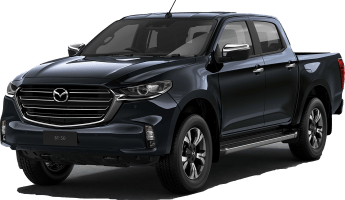
How practical is the space inside?
7 / 10
The BT-50's packaging is typical of this type of vehicle, so the pros and cons are similar, too. While it does have five seats, the rear bench of the dual-cab version is pretty upright and won't be great for bigger people over long distances.
But a nice touch is the indented bottom of the B-pillar for extra toe space. The rear bench base also splits 60/40 and there's storage underneath it.
.png)
In the front seat, it's relatively car-like and very Mazda to look at and touch. The base-model gets a six-way adjustable seat while more expensive versions have a powered driver's chair with eight-way adjustment.
The centre-console features a USB charger and dual-cab models have a charger for the rear seat as well. There's a large bottle holder built into each door and the BT-50 also features two glove boxes.
.png)
The dual-cab layout works against the load-space in the rear, which is hardly specific to this car, but means the cargo area is simply too short for the loads many people have in mind when they think ute.
You also need to spend extra to get a tub liner in the BT-50, but there are four tie-down points in every model except the SP, which only gets two.
.png)
What are the key stats for the engine and transmission?
6 / 10
This is really the big news here; the new, smaller engine in the XS model. While downsizing is all the rage, the conservative types who line up for dual-cab utes don't always agree with the smaller is better when it comes to what's under the bonnet. It's no secret that the Mazda's three-litre engine in the other models is a big selling point.
That said, there's no denying that smaller turbo-diesel engines can work in the real world, so how does this one stack up? Compared with the 3.0-litre BT-50, there's more than a full litre of engine capacity gone, with a capacity of just shy of 1.9 litres (1898cc).
In bald numbers, the smaller engine gives away 30kW to its big brother (110kW plays 140kW) but the real difference is in torque, or pulling power, where the 1.9 concedes a full 100Nm to the 3.0-litre (350Nm plays 450Nm).
_0.png)
Mazda has compensated for that somewhat by fitting the 1.9-litre vehicle with a shorter (lower) final-drive ratio in the differentials with 4.1:1 compared with the three-litre's 3.727:1.
The six forward ratios in the six-speed automatic (unlike the 3.0-litre BT-50, the 1.9 offers no manual gearbox option) remain the same in either version with both fifth and sixth gears being over-drive ratios for greater fuel economy.
So what does this mean for load-hauling and towing, two things that modern utes are often called upon to do? In payload terms, the XS can carry as much as any other BT-50 variant (up to 1380kg, depending on cab layout) but it does see a drop in towing capacity.
.jpg)
While the 3.0-litre BT-50 is rated to tow a braked trailer of up to 3500kg, in the 1.9-litre versions, that falls to 3000kg. This figure, however, is still better than many full-sized four-wheel drive wagons of just a few years ago and, for many ute buyers, will be more than enough towing capacity.
The driveline for the rest of the BT-50 3.0-litre range remains unchanged.
How much fuel does it consume?
8 / 10
Both BT-50 engines are Euro 5 complaint while the smaller unit enjoys an on-paper fuel economy advantage on the combined cycle of exactly one litre per 100km (6.7 versus 7.7 litres per 100km).
Given both units offer the same level of technology (double-overhead camshafts, four valves per cylinder and common-rail injection) the difference is down to that lower differential gearing and the inherent advantage of a smaller capacity engine.
Of course, sometimes the theory doesn't match the actuality, and in this case we really didn't get the chance to cover a huge distance in the XS.
That said, we did record an average of 7.2 litres per 100km on mainly country roads, which, combined with the 76-litre tank would provide a range of more than 1000km.
Warranty & Safety Rating
What safety equipment is fitted? What safety rating?
8 / 10
Ute safety has come a long, long way in recent times, and the Mazda is proof of that. Even in its most basic, XS 4x2 single-cab-chassis form, the Mazda gets autonomous emergency braking, forward collision warning, hill decent control, lane departure warning and prevention, rear cross-traffic alert, a reversing camera, active cruise-control, traffic sign recognition and blind-spot monitoring.
On the passive side, there are air-bags for every occupant including full-length curtain bags for the rear passengers of the dual-cab variant.
The BT-50 also has what's called secondary collision reduction which is a system that senses a crash has happened and automatically applies the brakes to help prevent a secondary impact.
.png)
The only safety features that the XS misses out on compared with the more expensive versions are front and rear parking sensors on the 4x2 single-cab-chassis and front parking sensors on dual-cab versions of the XS model.
The standard reversing camera makes up for much of that, however. You also miss out on remote keyless entry on the XS.
The whole BT-50 range scored a maximum five stars according to ANCAP testing.
What does it cost to own? What warranty is offered?
6 / 10
The BT-50 in any of its forms is covered by Mazda Australia's five-year/unlimited kilometre warranty.
Mazda offers a fixed price servicing regime for all BT-50s, and you can access prices via the company website. The service intervals are every 12 months or 15,000km, whichever comes first.
What's it like to drive?
5 / 10
Since there are no changes to the mechanical package of the 3.0-litre BT-50s, it's no surprise to learn not much has changed.
The engine remains a competent rather than inspiring performer. It can feel a little gruff and noisy when you work it hard, but thanks to all that torque, that isn't too much of the time.
On the road, the easy steering nature gives you good confidence and while the ride is not as smooth as some of the competition, at least both front and rear suspension seem pretty well synchronised.
But the ride remains choppy while a degree of body roll never encourages you to explore anywhere near the limits. The latter is hardly a criticism of a ute, but it remains that some of the Mazda's peers offer a more sophisticated ride.
.jpg)
Off-road, the Mazda soon shows it has the smarts to be a convincing bush companion. Our drive on dry, but very rocky, loose and quite steep surfaces was taken in the Mazda's stride, and only bigger lumps at odd angles required the use of the locking rear differential.
The Bridgestone Dueller A/T tyres in an 18-inch fitment are probably a step up from the shoes worn by many dual-cab utes.
While its low-ratio gearing will probably save the XS's bacon off-road (we didn't get the chance to find out) nothing can hide the fact that those 30kW, 1.1 litres of engine capacity and, critically, 100Nm of torque are AWOL.
This is largely the reason behind the Morley harsh marks for Driving above, and if you're cross-shopping a 1.9-litre BT-50 with a 2.0-litre Ranger based on engine capacity, there's a big difference in outputs. You simply need to drive the BT-50 XS harder than most modern utes for more of the time, and you still won't be covering the same ground as the 3.0-litre version.
.jpg)
There's still plenty of noise and clatter from the engine and although a smaller displacement engine will sometimes be smoother than its big brother, that's not the case here.
Once you're up and running, things improve as the engine relaxes and the gearbox crops revs to a commendable 1600rpm at 100km/h.
In isolation (which is how most people will experience the thing) the XS displays the unspectacular determination that characterises modern turbo-diesels, combined with a degree of intelligence from the six-speed automatic transmission.
But again, the briefest drive in the 3.0-litre BT-50 will suggest to you the XS is missing something.
We'll be following up this launch coverage of the 2022 BT-50 with specific reviews of the SP on AdventureGuide, and the XS on TradieGuide, so keep an eye out for these more extensive tests.
Verdict
Decontenting is a dirty word in the car game and while the move to a smaller engine to shave a few dollars off the price-tag hasn't ruined the BT-50, it has taken the edge off its towing and performance capabilities. More than that, however, it's still more expensive than some of its competition, including its close mechanical relation the Isuzu D-Max which can be had with the 3.0-litre engine and full 3.5-tonne towing capacity with a couple of hundred dollars change for a tank of diesel.
Some buyers will simply be expecting more than the $2000 or $3000 saving the engine downgrade represents.
As for the SP, well, the idea of a sports dual-cab ute doesn't gel with everybody, but this is probably as close as one will get. That said, any sportiness is the result of the visual approach and to drive the SP is to recognise it immediately as a member of the BT-50 family.
Note: CarsGuide attended this event as a guest of the manufacturer, with accommodation and meals provided.
Pricing Guides



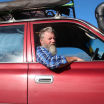
.jpg)
.jpg)
.jpg)
.jpg)





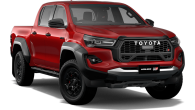
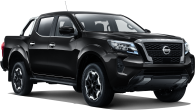

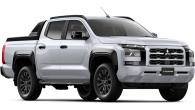


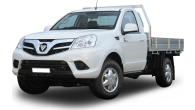
.jpg)
.jpg)
.jpg)


.jpg)
.jpg)


.jpg)

.jpg)
Comments